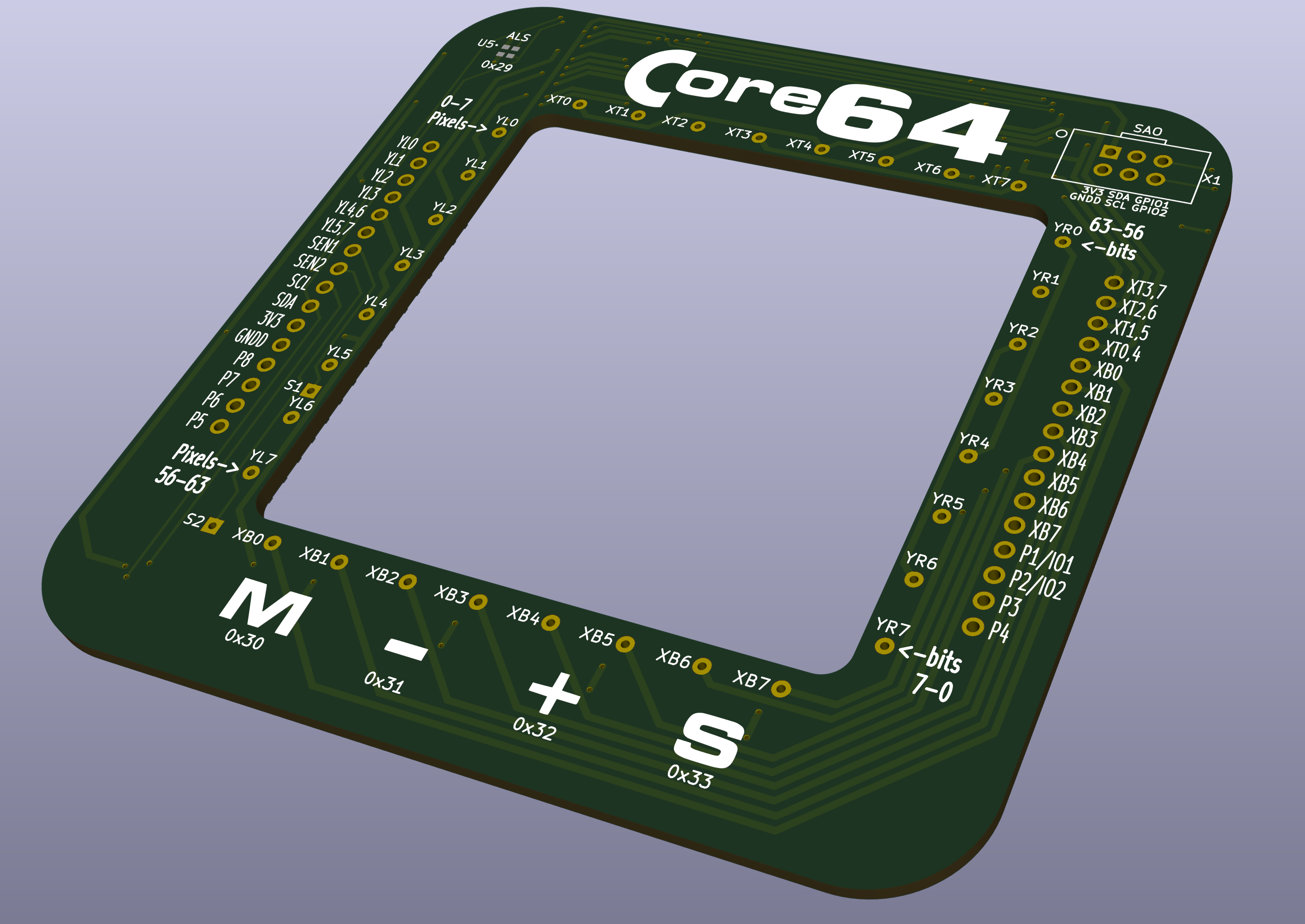I've kicked off another round of prototypes with what I think is the final configuration. I'm sticking with the dual board design.
The top Core Board will have four I2C hall sensor buttons in the bottom edge of the frame to enable more flexibility with the user interface (Mode, Set, Minus, Plus). The hall sensors read flux strength, and that makes the sensitivity tunable versus the hall switches which use a fixed flux level for activation. I am also now including an ambient light sensor (upper left corner of this rendering) to automatically adjust the LED array brightness. The LEDs in the LED array have a dynamic range that needs to be adjusted for dim and bright conditions or they end up being blinding in low light, and unusable outside in the sunlight.

There are also some traces and pads to allow me to experiment with stacking 8 core planes on a single logic board. Look for that as an entry in the Circuit Sculpture Challenge. I've got something unique planned for that.
EDIT: I was not able to dedicate enough time to this project to enter the contest... But I'm still making progress on the goal of stacking 8 planes. See the next update for more details.
The core boards and components are ordered and should arrive this weekend.
The logic board is next for update work. I have a long list of refinements pinned down, and schematic refinement will begin in the next few days. The highlights:
- Stepping up to a Teensy 3.2 because the LC doesn't have enough IO.
- Removing the slow IO expanders, so core scanning speed will be greatly increased.
- Increased usable battery voltage range of ~2.8 to 7V (1S Lipo up to 4 primary AAA or AA Lithium cells)
- Using much lower drop-out 5V and 3V3 regulators to make better use of the batteries.
- Creating more room for expansion by exposing several I2C and SPI pins for optional fun stuff: 3.2" LCD to replace LED array, Monochrome or Color 128x64 OLED, 128x32 Teensy View OLED, Micro SD Card, 2x SAO ports, and a QWIIC port.
- The battery area will accommodate being powered with an optional 1S LiPo and charge manager for those who prefer not to use primary cells.
An expansion option that I'd like to see offered is the ability to communicate between badges with magnetic fields. The first choice would be NFMC like the Defcon 27 Badge. I've also see some 3D flux sensors (Infineon) that might work, and I've considered a PN532 Breakout Board. If you have some interest in bringing something like that to life for this project, I'd like to hear from you.
 Andy Geppert
Andy Geppert
Discussions
Become a Hackaday.io Member
Create an account to leave a comment. Already have an account? Log In.